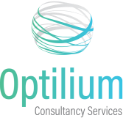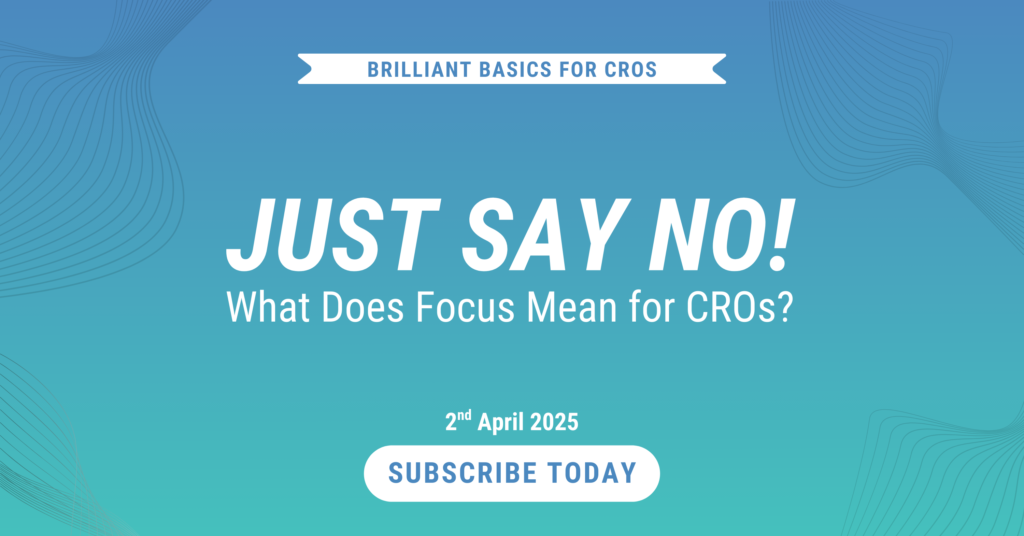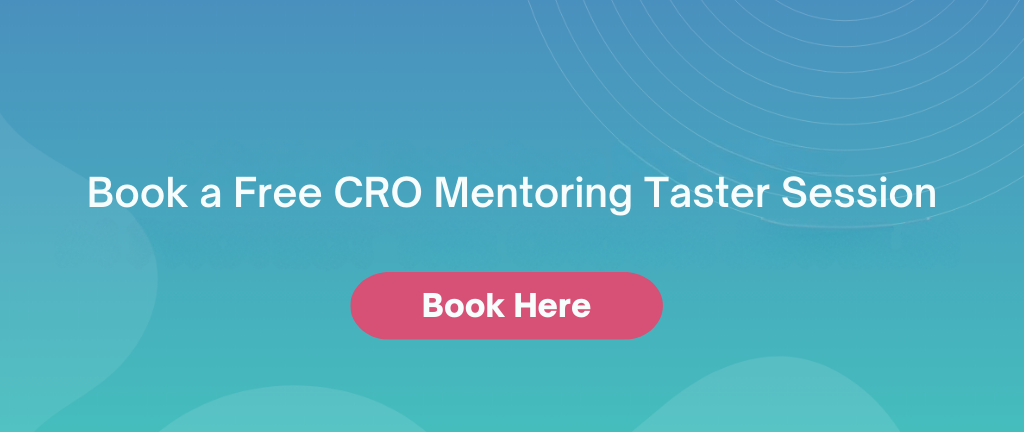Just Say No! What Does Focus Mean for CROs?
For all CROs (in fact, everyone), the greatest commodity of all is time. Warren Buffett, the rather successful investor, once said, “The difference between successful people and really successful people is that really successful people say no to almost everything.”
For Buffett, this meant not being enticed by multiple opportunities, short-term trends or hype. He avoided the bursting dot-com bubble by ignoring stocks he didn’t understand. He remained loyal to his investing principles. In short… he applied ruthless focus.
When it comes to great business examples of focus, I think of Zoom. In 2011, Founder Eric Yuan recognised that a number of collaboration players like Cisco, Skype, WebEx, Google and Microsoft had generic platforms with broad audiences and confusing interfaces. He applied a laser-like focus on one thing: making extremely simple and reliable B2B video calls. One-click conferencing. Superior video and voice quality. No chat. No email. No project management.
By 2021, Zoom hit a $100+ billion valuation, overtaking WebEx and Skype. Instead of being a jack-of-all-trades, Zoom dominated one specific pain point better than anyone else.
My takeaway is that most successful strategies contain as much thinking about what you will not be doing as what you will be doing.
How can we apply this logic to CROs?
It all starts with customers. Given that the priority is to accelerate revenue growth, we can divide our customers into two dimensions: existing and new. Here are some simple and practical thoughts on how to bring this to life.
1. Focus on the most valuable existing customers
Every CRO should be able to answer the question: “Who is our most valuable customer?” Clue – it’s rarely your biggest customer! Value can be interpreted in a variety of ways – customer lifetime value (CLTV), customer satisfaction (NPS), for example.
I am strongly of the view that we should assess the value of customers through the lens of growth opportunity. In other words, which customers have the greatest propensity to generate incremental revenues with us?
If we plot our customers along two axes – ‘total spend of the company’ and ‘amount of white space’ – our most valuable customers would sit at the top right-hand section of our graph. These customers have a lot to spend, with scope to buy a lot more from us.
This shouldn’t be an academic exercise – this method should form the foundation for how we operate. Our segmentation model should deliver three specific groups:
- Attack (aggressive acquisitive growth)
- Retain and Grow (aggressive defence with growth)
- Optimize (effective and efficient management)
We can then create an internal operating model that maps our resources and skills carefully – optimizing the opportunities and defending the core.
If you’d like some tools to help you segment your customers or design an operating model, give me a shout at alan.crowther@opilium.co.uk and I’ll send them to you for free.
2. Focus on the Sweet Spots for New Business
Critical to establishing ‘where to play’ is getting absolute clarity on our own value proposition. Are we clear on what pains we’re solving and for whom? Can we define outcomes in customers’ language and how our solution is distinct from others? If so…read on!
At the market level, we can segment the landscape using two key variables – market attractiveness and our ability to win.
- Decide what industries and/or geographies deliver appropriate scale and growth opportunity.
- Consider how our capabilities, credibility and competition align with these sectors.
If we rank and plot these variables, we can create three groups:
- Priority 1 (invest – high ability to win)
- Priority 2 (selectively invest – moderate attractiveness and some ability to win)
- Non-Focus (say ‘no’)
From this foundation, we can align our hunting, specialist support and associated marketing budgets.
We can also execute the next level of forensic focus by applying account-based marketing techniques, assessing compelling events and building buyer personas within our target segments.
3. Put Your Money Where Your Mouth Is
CROs need to deploy a number of reinforcing mechanisms to support and embed the advertised focus areas. Team members have a happy knack of going off-piste – either because they know better or they simply enjoy doing certain stuff!
As highlighted earlier, the operating model is fundamental to promoting and prioritising sweet spot activities. Here are a few more simple ideas:
- Consciously STOP some initiatives
- Ensure KPIs are aligned only to focus areas
- Build a War Room visibly advertising focus areas and celebrating progress
- Align budgets and investments to sweet spots, transparently
- Engage personally in customer activities in the ‘Attack’ and ‘Priority 1’ segments
In summary, focus matters… a lot. It ensures CROs target the right customers and opportunities through the most effective channels, optimizing skills and resources.
If I can remember my Geoffrey Chaucer quote from my English exams…
“Time and tide wait for no man!”
If you found this interesting, you can watch a recording of my webinar “6 Traits of Successful CROs” HERE.

FREE WEBINAR: “SILO BUSTING – ALIGNING SALES, MARKETING AND CUSTOMER SUCCESS TO DRIVE REVENUE GROWTH”
Join me on the 29th April, 16:00 BST to discover why CROs are having major problems unifying sales, marketing and customer success teams to drive revenue growth.
✅ Learn how to break down silos and accelerate revenue growth
✅ Take away free tools, techniques and templates to drive change
Speaker: Alan Crowther – CRO Coach, Mentor and Respected Commercial Excellence Thought Leader 👉 CLICK HERE TO SECURE YOUR FREE PLACE TODAY
Enjoy this newsletter? Subscribe to the newsletter on LinkedIn, repost to your network or learn more about me, Alan Crowther, and Optilium here.


